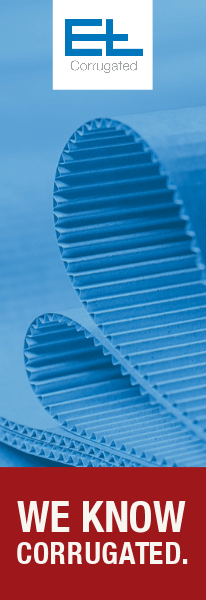According to statista, packaging, paper and paperboard production has increased significantly since 2010. The biggest growth driver? The rise of e-commerce. Tom Cash, Director of automation parts supplier, Foxmere, explains how automation is helping the paper and packaging industry meet its environmental requirements.
The e-commerce industry is booming. In 2023, global retail e-commerce sales reached an estimated $5.8 trillion, and predictions suggest that this figure will grow in the years to come.
Such aggressive growth, of course, drives up the need for paper and cardboard packaging. And as living standards worldwide evolve, the demand for personal hygiene products like tissues, toilet paper and wipes also increase.
Needless to say, the pulp and paper industry is thriving and, in Europe alone, the paper and pulp industry uses approximately 1,200 paper machines, each of which produces an average of 80,000 tonnes of paper a year. Unfortunately, however, the biproduct of this high-volume production is high-volume waste. In fact, producing just one piece of A4 paper requires 10 litres of water, as reported by The World Counts.
The paper manufacturing process involves several crucial stages, including pulping, refining, forming, pressing, drying and finishing.
The pulping step, in particular, requires large volumes of water for fibre separation, transportation and dilution of chemicals. In a closed-loop water system, sensors continuously monitor water quality as it flows through various stages of the papermaking process. Based on sensor data, control systems then adjust treatment processes, like filtration and purification, ensuring optimal water quality for reuse.
Robotics may also be employed for tasks like equipment maintenance to enhance system efficiency and sustainability.
Paper manufacturing also requires extensive heat due to the large amounts of water that need to be evaporated during the drying process. According to IEA, drying accounts for 70% of the energy use in this sector.
Heat pumps are an excellent solution for reducing heat waste. They transfer heat from one place to another using a refrigerant. In paper manufacturing, they can reuse latent heat from the drying process to produce steam for further drying.
In fact, heat pumps are so effective that the European Heat-Pump Association (EHPA) and the Confederation of the European Paper Industries (Cepi) have teamed up to lay the groundwork for heat pumps to be integrated in Europe’s paper mills. This comes as a joint EHPA-Cepi working group calculated the potential energy savings and estimated that heat pumps can lead to a reduction in energy demand for drying by 50%, as well as potentially reducing emissions via fuel substitution.
What’s more, it is also believed that 65% of process heat in the European paper industry can be supplied by heat pumps that make use of the waste heat sources inside production processes.



